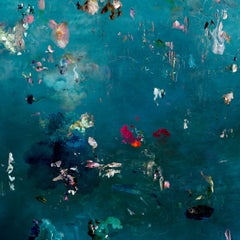Isabelle Menin Changing Moods Cyan
2010s Abstract Still-life Photography
Photographic Paper
2010s Abstract Still-life Photography
Photographic Paper
2010s Abstract Still-life Photography
Photographic Paper
People Also Browsed
2010s Abstract Still-life Photography
Photographic Paper
2010s Abstract Still-life Photography
Photographic Paper
2010s Abstract Still-life Photography
Photographic Paper
2010s Abstract Still-life Photography
Photographic Paper
2010s Contemporary Color Photography
Photographic Paper
2010s Abstract Still-life Photography
Photographic Paper
2010s Contemporary Still-life Photography
Photographic Paper
A Close Look at Abstract Art
Beginning in the early 20th century, abstract art became a leading style of modernism. Rather than portray the world in a way that represented reality, as had been the dominating style of Western art in the previous centuries, abstract paintings, prints and sculptures are marked by a shift to geometric forms, gestural shapes and experimentation with color to express ideas, subject matter and scenes.
Although abstract art flourished in the early 1900s, propelled by movements like Fauvism and Cubism, it was rooted in the 19th century. In the 1840s, J.M.W. Turner emphasized light and motion for atmospheric paintings in which concrete details were blurred, and Paul Cézanne challenged traditional expectations of perspective in the 1890s.
Some of the earliest abstract artists — Wassily Kandinsky and Hilma af Klint — expanded on these breakthroughs while using vivid colors and forms to channel spiritual concepts. Painter Piet Mondrian, a Dutch pioneer of the art movement, explored geometric abstraction partly owing to his belief in Theosophy, which is grounded in a search for higher spiritual truths and embraces philosophers of the Renaissance period and medieval mystics. Black Square, a daringly simple 1913 work by Russian artist Kazimir Malevich, was a watershed statement on creating art that was free “from the dead weight of the real world,” as he later wrote.
Surrealism in the 1920s, led by artists such as Salvador Dalí, Meret Oppenheim and others, saw painters creating abstract pieces in order to connect to the subconscious. When Abstract Expressionism emerged in New York during the mid-20th century, it similarly centered on the process of creation, in which Helen Frankenthaler’s expressive “soak-stain” technique, Jackson Pollock’s drips of paint, and Mark Rothko’s planes of color were a radical new type of abstraction.
Conceptual art, Pop art, Hard-Edge painting and many other movements offered fresh approaches to abstraction that continued into the 21st century, with major contemporary artists now exploring it, including Anish Kapoor, Mark Bradford, El Anatsui and Julie Mehretu.
Find original abstract paintings, sculptures, prints and other art on 1stDibs.
Finding the Right Still-life-photography for You
When it comes to accenting a home or collection with visual art, still-life photography complements all design aesthetics. And there are numerous ways to arrange your still-life photography and other wall art in your home. A salon-style gallery wall, for example, presents the opportunity to intersperse photographs and prints with such items as wall sculptures, baskets, plates, mirrors and sconces. For a harmonious mix, however, choose still-life photos with the same general palette as the other artworks.
Ranging from minimalist scenes to lavish, campy arrangements, still-life photography encompasses multiple genres to fit any taste. Following the tradition of still-life painting, still-life photography elevates often ordinary, inanimate objects. When photography was a new medium in the 19th century, daguerreotype and salt-print still lifes frequently mimicked the arrangements that had been popular in painting. In the 20th century, still-life photographs evolved, reshaped by the experimentation of modernism.
Far more versatile than the name implies, still-life photography involves numerous styles and themes. Photographers like Stefanie Schneider use still lifes to capture their subjects in their most raw state. They can also create hyperreal scenes that border on Pop art, such as in the work of Giuliano Bekor.
Find still-life photographs on 1stDibs by artists including Dora Franco, Allan Forsyth, Stuart Möller and many more.


